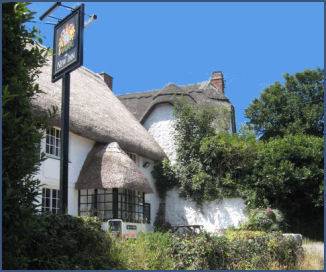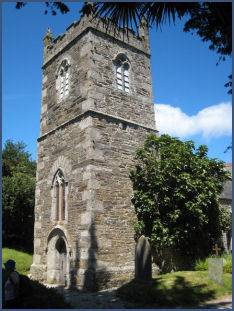Manaccan
OS Grid ref:-
 The pleasant village of Manaccan, known in Cornish as Managhan, borders on the southern bank of the Helford River, at the head of Gillian Creek on sheltered eastern side of The Lizard Peninsula.
The pleasant village of Manaccan, known in Cornish as Managhan, borders on the southern bank of the Helford River, at the head of Gillian Creek on sheltered eastern side of The Lizard Peninsula.
The village is of ancient origin and is first recorded in a Charter of the Anglo-Saxon King Edgar dating to 967 when it was known as Lesmanoc meaning in Cornish, 'court of the monks'. The village was known as Minster in the medieval era and is referred to in in Cornish as Managhan.
In 1791, titanium, or macannanite, as it was then named , was discovered in the village by the Rev. William Gregor. Today much of the farmland surrounding the village is used for the growing of spring flowers, which are exported to America.
 Manaccan is a hillside parish set in pleasant countryside to the south of the Helford River. One of the most charming villages in Cornwall, Manaccan features colour washed thatched cottages set at different levels along the winding footpaths of the hillside. The village also boasts a picturesque old thatched inn, the New Inn, which serves fine ales and excellent food at very reasonable prices.
Manaccan is a hillside parish set in pleasant countryside to the south of the Helford River. One of the most charming villages in Cornwall, Manaccan features colour washed thatched cottages set at different levels along the winding footpaths of the hillside. The village also boasts a picturesque old thatched inn, the New Inn, which serves fine ales and excellent food at very reasonable prices.
The handsome Church of St Mennaccus boasts a long history, dating back to the twelfth century. The church, which is dedicated to St Mannacus and St Dunstan, stands at the head of Durra Creek. The church has become famous for a large fig-tree which grows out of the western part of the south wall of the building. The tree is at least 250 years old.
One of the past vicars of St. Mennaccus church was the notable Cornish historian, Richard Polwhele, who wrote who wrote the History of Cornwall (1816).
At the time of the Napoleonic wars, Captain Bligh of the Mutiny on the Bounty fame was engaged in research for the Admiralty in the Helford River during the course of which he was arrested as a suspected spy. Bligh was locked in the coal cellar of the Rev. Polwhele, but eventually, on convincing him of his true identity and mission, he was released. Despite this unfortunate event, Captain Bligh and the Rev. Polwhele became firm friends and kept in contact.
Nearby stands Trelowarren House with its handsome gardens and mixture of architectural styles. Both house and gardens are open to the public and there is also a restaurant and art gallery. The Halliggye Fogou, Cornwall's largest Iron Age Fogou, is located in the grounds of the house.